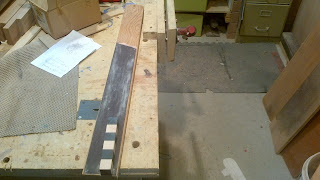At this moment I sitting at our kitchen table awaiting the annual attack of the ghouls,goblins and ghosts. We moved into this neighbourhood five years ago and as the sub-division has filled in there have come to be more and more little Trick or Treat people. (which I think is great) I have a personal policy of good treats for little kids and not so much for teenagers. It is my feeling that you should have out grown Trick or Treat by middle school age.
Anyway, I thought I would look through thetoolstore.ca's website and see what I thought would be a treat.
In no particular order:
Bessey Utility Knife kit;
I've talked about this kit before, but I still believe it to be a great value.
A Bosch Jig Saw, you'll only ever have to buy one.
I sold lots of them and I don't think they ever worn out, they just got abused to death on job sites. And, the prices have come down in the last few years.
The weather is turning against us, right now it is raining hard and the wind is blowing a gale. Good gloves are a must if you are going to work for any length of time out doors from now until March.
| and if you have to work in the wet |
| I have had my Estwing for 30 years and it was 25 years old when I got it |
Cheers,
Have a nice evening with your kids.

















.JPG)
.JPG)








